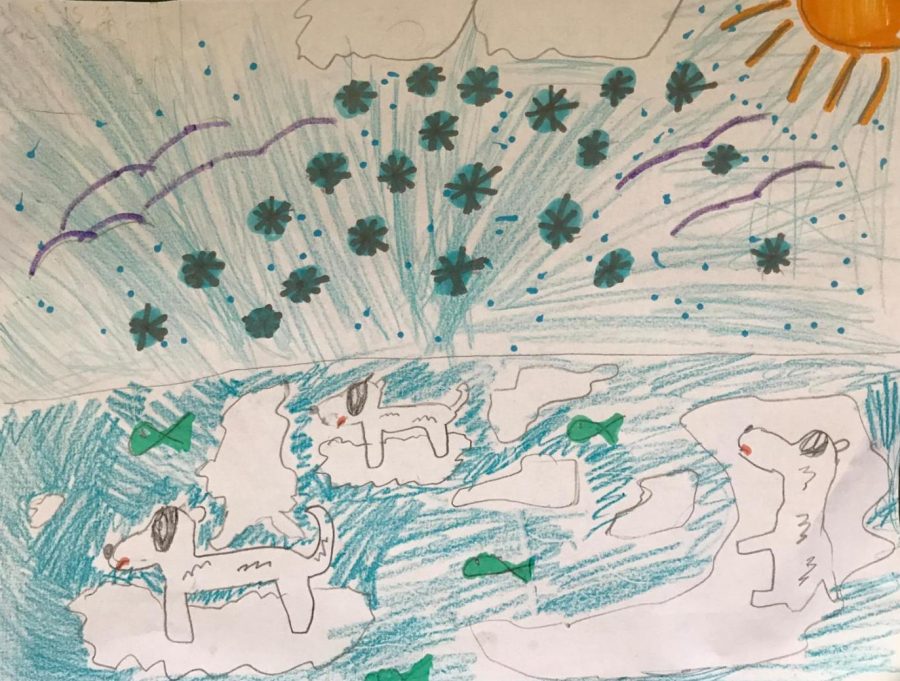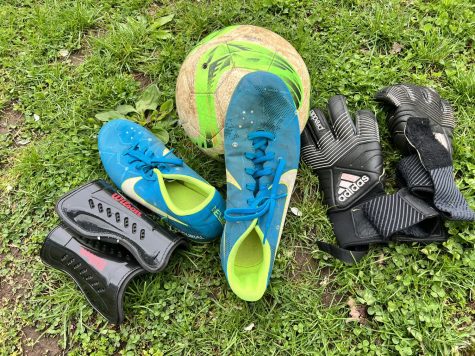Time to Focus on Climate Change: What You Can’t See IS Dangerous!
When it comes to climate change, everyone knows time is ticking.
Earlier this year, New York City got a Climate Clock to show it, displaying in years, days, hours, minutes and seconds how much time is left before global warming reaches a point of no return. (There are Climate Clocks in other world cities, too.)
The big digital clock on the side of a building shows what scientists and experts have been saying: If we keep treating the planet irresponsibly, our deadline to save the Earth could expire in 2027. This puts people, animals and habitats in serious danger.
“No one is excluded from this disaster,” said Dave Cruz, a high school student who is a former East Rock Record reporter and a climate change activist. He said climate change is a threat to everyone on planet Earth, no matter how old or young you are.
“It is no longer just affecting the polar bears and the polar ice caps,” he said. “It’s affecting our cities and it’s affecting our youth.”
The impact of climate change is everywhere, said Mauro Diaz-Hernandez, a climate health program administrator at Yale and an MPH candidate at the University of Connecticut, who spoke with East Rock Record reporters.
“Changes to climate affect what we eat, what we drink, how and what we breathe, how healthy we are, and really just the whole Earth,” said Mr. Diaz-Hernandez.
“It is no longer just affecting the polar bears and the polar ice caps. It’s affecting our cities and it’s affecting our youth.”
Many people around New Haven, including students at East Rock Community & Cultural Studies Magnet School, are concerned. According to The East Rock Record Fall 2020 survey, 78 percent of students worry that animals will become extinct because of climate change.
The survey also found that 90 percent of students felt it was important to understand why climate change was happening. But only one-fourth of them had heard of greenhouse gasses. In fact, greenhouse gases can be a scary threat.
But what are they?
Greenhouse gasses have that name because they act a lot like a greenhouse. If you think about it, a greenhouse warms up air to help keep plants well and alive. In the same way, greenhouse gases keep the Earth’s atmosphere at a level that helps people, animals and plants grow in a healthy manner.
Without any greenhouse gases, Earth would be like other planets in our solar system that cannot support life because they simply do not have the right conditions for living beings.
Most of the time, however, greenhouse gases are talked about in a negative way. They are part of the problem driving climate change, said Mr. Diaz-Hernandez. He explained the situation by comparing greenhouses gases to a blanket.

“Imagine if you’re cold. What do you do when you’re cold? You may put on a sweater, you may put on a jacket or you may put on a blanket,” he said. “Those greenhouse gases work in the same way with the Earth.”
He said that greenhouse gases form “a blanket to help keep the Earth warm. What’s happening now and what’s causing global warming is that we’re putting a lot, and too many, of these greenhouse gases into the Earth.”
In the same way that we get really hot when we cover ourselves with too many blankets, or really cold when we don’t have enough of them, greenhouse gases can affect the temperature of our planet. So, if we have too many greenhouse gases, the Earth becomes a wasteland of lava. If we have too little, the Earth becomes a wasteland of ice.
Students at East Rock School are concerned that these issues do not get enough attention in school. “Some of the teachers don’t even bring it up unless a student asks, ‘What is climate change?’” said Adham Dweck, who is in fifth grade.
Also, he said, some teachers downplay it, saying things like, “Don’t worry about that, no need to worry,” said Mr. Dweck.
He believes a big part of the reason why global warming is becoming such a big problem is that people don’t have enough information. Those who do, are worried.
According to The East Rock Record Fall 2020 survey, 78 percent of students worry that animals will become extinct because of climate change.
“We’re all going to die if climate change continues,” said Jaden Martinez, in sixth grade.
The effects of climate change are not limited to humans. Animals are also being affected — and very dramatically. Changes to the climate are destroying animal habitats. Big increases in temperature are melting the polar ice caps, leaving some polar bears without a home.
The migration, or travel, patterns of animals also depend on a stable climate.
Casey Pickett, Director of Carbon Charge at Yale, told East Rock Record reporters that changing climatic cycles are driving animals to places they normally would not go. That can cause encounters with species that can harm them, he said.
“Animals like to be in a certain temperature range. Some like it to be cold, but not really cold. And some like it to be warm, but not really warm,” Mr. Pickett said. “As the Earth changes and climate change happens, animals will move either North or South, depending on where their ideal temperature range is on the planet.”

One animal being affected: Moose. As their natural habitat gets warmer, moose are migrating further North. But that brings them into contact with a tick species which they were never close to before. It is causing some to die because the ticks get on their skin and suck all of their blood.
Another example of the impact of global warming? Coral reefs are dying because changes in ocean temperature and acidity make it impossible for several species to inhabit their regular environment.
All of this sounds very scary. Trying to reverse damage to the Earth is a huge challenge. But students have an important role in making changes that can help to save our world.
Carolyn Ross-Lee, school climate coordinator for New Haven Public Schools, said that change is often driven by young people.
“When I see you guys say, ‘This isn’t right,’ when you make signs and say, ‘We have go out and protest,’ it is so powerful,” she said. It is motivating to see youth activism, “to watch you go through it and to know that you see it and are willing to make a change.”
There are many ways that young people can fight climate change, said Mr. Cruz. Students, can focus “on mass mobilizations and protests and strikes and petitions and pressure on our government officials.” Being visible, said Mr. Cruz, “does make a difference. And in order for us to solve climate change, it requires a big solution.”
“Kids and teenagers play an instrumental role in that big societal change, and it shouldn’t be underestimated.”
Mr. Cruz said that many people underestimate the power of young people to shape the future of the planet. But as the next generations to inherit the world and all of the damage that it has suffered, planet Earth will depend on young people to lead the change to save it from climate destruction.
“Children and teenagers have time and they have that optimism, that ‘we can do it’ kind of attitude,” Mr. Cruz said. “Kids and teenagers play an instrumental role in that big societal change, and it shouldn’t be underestimated.”
As of November 25, we have 7 years and 36 days (plus some hours, minutes and seconds) to get closer to zero emissions to slow the damage we have done to the Earth. If we do nothing, December 21, 2027, could be a very, very dangerous day for our world.
Edited by Maria Fernanda Pacheco





